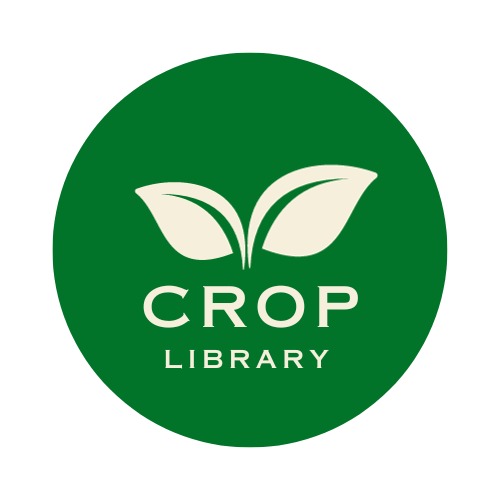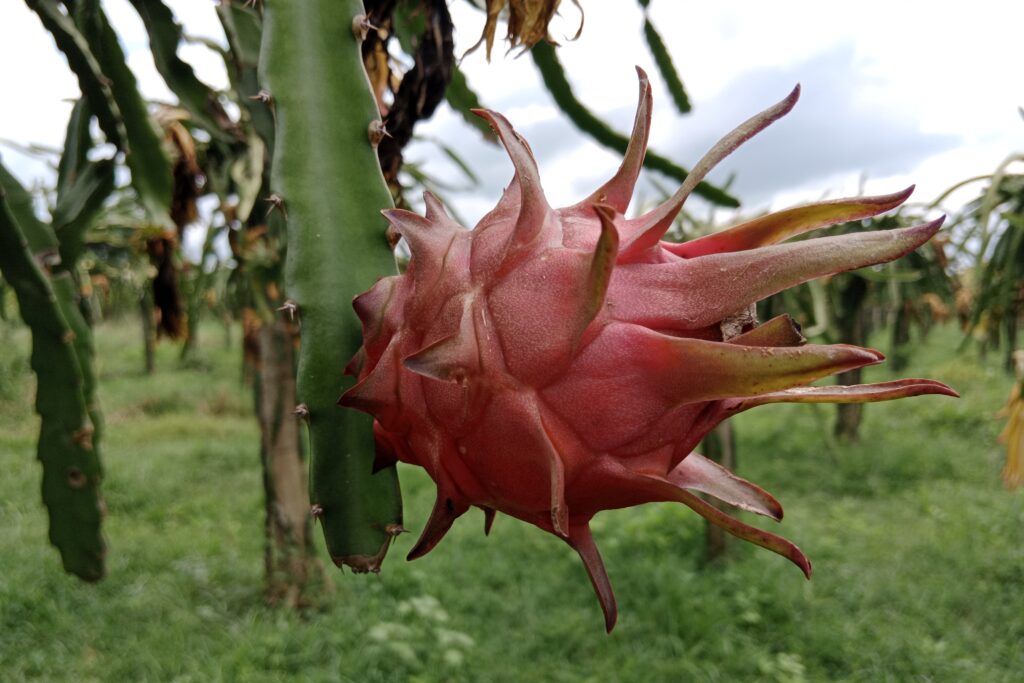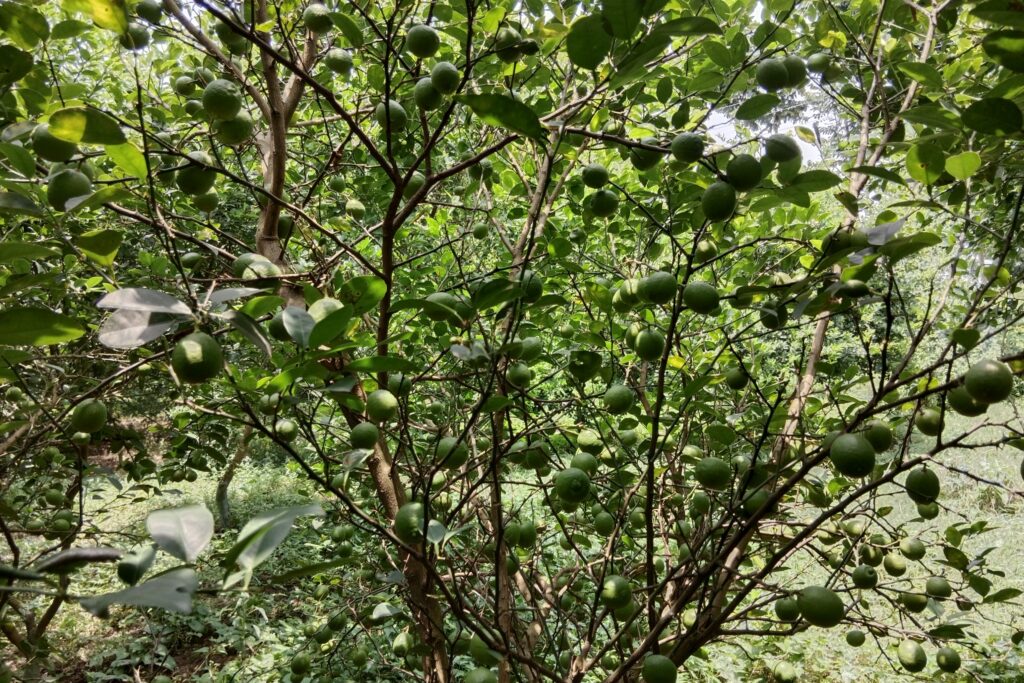Kidney Bean Farming
Kidney beans (Phaseolus vulgaris), also known as red beans or Rajma, are a vital warm-season legume crop prized for their high protein, fiber, and nutrient content. Kidney bean farming has emerged as a lucrative agricultural enterprise, offering substantial financial returns for farmers. A detailed assessment of kidney bean farming profit per acre shows that with a total income of NRs. 72,800 generated from an average yield of 520 kg per acre, and a total investment of only NRs. 35,000 covering expenses such as land preparation, seeds, fertilizers, irrigation, pest control, and harvesting, the net profit reaches NRs. 37,800.

This translates to a high profit margin of 108% and a return on investment (ROI) of 1.08, highlighting the strong economic potential and profitability of kidney bean cultivation when managed efficiently.
Land Preparation
The land preparation process begins with deep plowing to a depth of 20–25 cm using a moldboard plow after harvesting the previous crop, which helps bury weeds and crop residues, improves soil aeration, and enhances water infiltration. This is followed by 2–3 rounds of harrowing at 7–10 day intervals to break clods, level the soil, and incorporate any remaining organic matter and weeds. Final leveling is done to ensure a uniform surface for effective irrigation and to prevent waterlogging in low areas. Additionally, forming ridges and furrows—especially in waterlogged regions—is recommended, with ridges about 15–20 cm high, where seeds are sown on the ridges for better drainage and irrigation efficiency.
Soil Type
Kidney beans grow best in well-drained, loamy soils rich in organic matter (at least 2%), with a slightly acidic to neutral pH range of 6.0 to 7.0, though they can tolerate a broader range of 5.5 to 7.5. Proper drainage is essential, as the crop is susceptible to waterlogging. Heavy clay soils require effective drainage measures, such as ridges or raised beds, whereas sandy soils require more frequent irrigation and fertilization. Saline, alkaline, or poorly drained soils should be avoided to prevent growth issues and reduced rhizobium activity.
Climatic Requirements
| Factor | Specific Aspect | Requirements |
| Temperature | Optimal Growing Range | 15°C to 25°C |
| Germination | Soil temperature >10°C (ideally 15-30°C); frost is lethal | |
| Flowering & Pod Setting | Critical stage; temperatures >30°C or <10°C cause flower/pod drop; cool nights beneficial | |
| Rainfall | Moderate | 600-900 mm well-distributed during growing season |
| Critical Periods | Adequate moisture essential during germination, flowering, and early pod filling | |
| Sensitivity | Severe drought during flowering/podding reduces yield; heavy rain causes waterlogging/disease | |
| Sunlight | – | Full sun required (minimum 6-8 hours direct sunlight daily) |
Major Cultivars
| Selection Factor | Category | Type/Variety | Characteristics | Examples |
| Cultivar Choice | Common Types | Red Kidney | Large, dark red, kidney-shaped | ‘Light Red Kidney’, ‘Dark Red Kidney’ |
| White Kidney (Cannellini) | Large, white, kidney-shaped | – | ||
| Pink/Speckled | – | ‘Pink Panther’, ‘Cranberry’ | ||
| Growth Habit | Bush (Determinate) | Compact (30-60 cm), early maturity (70-90 days), mechanical harvest friendly, less lodging, most common commercially | – | |
| Pole (Indeterminate) | Vining (2-3m), requires trellis support, longer season (90-120 days), higher per-plant yield, labor-intensive | – | ||
| Region-Specific Examples | India | – | ‘Rajma Chitra’, ‘Rajma Sharmili’, ‘HUR-15’, ‘HUR-137’, ‘VL Rajma 125’, ‘PDR-14’, ‘KRC-5’ | |
| USA | – | ‘Montcalm’, ‘Red Hawk’, ‘Crimson’ |
Seed Rate & Treatment
For bush-type varieties, use a seed rate of 30-35 kg/acre; for pole-type varieties, use 10-12 kg/acre. Before sowing, treat seeds with Thiram@4gm per kg of seeds, dry them in shade, and sow immediately.
Planting
a). Planting Season
| Region | Season | Planting Period | Key Considerations |
| Plains | Rabi | October – November | Primary season; planted after monsoon rains recede to avoid extreme heat during flowering |
| Kharif | June – July | Possible only in cooler regions with assured drainage systems | |
| Hills | Kharif | April – May | Dependent on altitude and frost risk |
| Spring | February – March | Must avoid frost; timing varies with elevation |
b) Spacing
For bush-type kidney beans, rows should be spaced 60 cm apart with plants positioned 15 cm apart within each row. In contrast, pole-type varieties require wider row spacing of 100 cm, and plants should be placed 20 cm apart within the row, with even greater spacing adjustments recommended when intercropping is practiced.
c) Planting Method
The most common planting method for kidney beans is direct seeding, where seeds are sown 3–5 cm deep into the soil. Alternatively, seeds can be dropped into furrows opened by a plow or tiller and then covered during the next pass, known as the behind plow or furrow method. Dibbling involves placing seeds into holes made by a dibbler at the recommended spacing. In areas requiring better drainage, seeds are planted 5–7 cm deep on top of prepared ridges to prevent waterlogging and promote healthy growth.
d). Number of Plants per Acre
Bush Types: 44966 plants per acre (based on above spacing).
Pole Types: 20,235 plants per acre.
Irrigation
Effective irrigation in kidney bean farming is critical during the stages of germination, flowering, pod setting, and early pod filling. Irrigation frequency depends on soil type, temperature, and rainfall: sandy soils may require watering every 4-5 days in hot conditions, while loamy soil typically needs irrigation every 7-10 days in the absence of rain. It is essential to avoid waterlogging by ensuring perfect drainage and to cease irrigation 2-3 weeks before harvest to promote pod drying. Recommended methods include furrow irrigation (along ridges), sprinklers, and drip irrigation—with drip systems being the most efficient for water conservation and reducing leaf wetness and disease incidence.

Fertilizer and Manure
Soil testing is essential for providing precise recommendations on nutrient management, helping to optimize fertilizer use, improve crop yield, and maintain soil health.
| Application Timing | Type | Material | Rate per Acre | Key Details & Remarks |
| Basal (At Planting) | Organic | FYM/Compost | 10-15 tonnes | Well-decomposed; incorporated during land preparation |
| Biofertilizer | Rhizobium phaseoli culture | Seed inoculation | Applied before planting to enhance biological nitrogen fixation | |
| Inorganic (N) | Nitrogen | 20-25 kg | Essential for initial growth; avoid excess (promotes foliage over pods); adjust according to soil test. | |
| Inorganic (P₂O₅) | Phosphorus | 50-60 kg | Critical for root development/flowering/pod set; apply as SSP or DAP | |
| Inorganic (K₂O) | Potash | 40-50 kg | Supports pod development/disease resistance; apply as MOP | |
| Top Dressing | Inorganic (N) | Nitrogen | 15-20 kg | Conditional application: Only if deficiency symptoms (pale leaves) appear; apply at 4-5 weeks after planting; avoid late applications |
Weed Control
Weed control is critically important during the first 30-45 days after planting when kidney beans are highly vulnerable to competition. Effective methods include chemical control through pre-emergence herbicide application (such as Pendimethalin at 1.0 kg active ingredient per acre) immediately after planting but before weed emergence, while post-emergence herbicides are less commonly used due to crop sensitivity and require careful selection, typically targeting specific grasses when present, with strict adherence to label instructions.
Mechanical and cultural approaches involve 2-3 timely hoeings and hand weedings, with the first intervention at 15-20 days after planting (DAP), a second at 30-35 DAP, and an optional third if needed, complemented by mulching which simultaneously suppresses weeds and conserves soil moisture.
Flowering and Fruit Management
Flowering in kidney beans typically begins 35-50 days after planting (DAP) for bush varieties and later for pole types, requiring optimal temperatures of 20-25°C and consistent moisture, as environmental stresses like drought, heat, waterlogging, or nutrient deficiencies can trigger significant flower drop. Following self-pollination, pods develop rapidly, with adequate moisture and potassium being crucial for proper pod filling during this developmental stage.
Effective management involves maintaining irrigation throughout flowering and podding, vigilant monitoring for pests and diseases targeting flowers and pods, and ensuring trellising systems for pole varieties are securely established before flowering to adequately support the weight of developing pods.

Pest and Disease Management
Common Pests
a) Bean Stem Fly
The Bean Stem Fly (Ophiomyia spp.) is a damaging pest whose larvae bore into (mine) the stems of kidney bean plants, disrupting nutrient and water flow, which leads to wilting, stunted growth, and potential plant death; effective control combines using resistant varieties, applying seed treatments with appropriate insecticides or bioagents as a preventive measure, and targeted foliar sprays like Dimethoate upon early detection of infestation to kill larvae before extensive stem damage occurs.
b). Aphids
Aphids damage kidney bean plants by sucking sap from leaves/stems, weakening growth and causing distortion, while also acting as vectors for persistent viruses (e.g., Bean Common Mosaic Virus). Effective control requires regular monitoring of the undersides of leaves; early infestations are managed with organic treatments (neem oil or insecticidal soap), while severe outbreaks may necessitate systemic insecticides like Imidacloprid for rapid knockdown, though resistance management and beneficial insect preservation should be considered.
c). Pod Borers (Helicoverpa/ Maruca)
Pod Borers (Helicoverpa armigera / Maruca vitrata) are highly destructive pests whose larvae bore into developing pods, consuming seeds and causing direct yield loss, contamination, and pod rot. Integrated management includes deploying pheromone traps for adult monitoring/mass trapping, applying biological controls like Bacillus thuringiensis (Bt) or Spinosad (target-specific biopesticide), and resorting to need-based chemical sprays (e.g., Emamectin benzoate) only when infestation thresholds are exceeded – always prioritizing harvest safety intervals to minimize residual toxicity.
d). Whitefly
Whiteflies damage kidney beans by sucking sap from leaves, weakening plants and excreting sticky honeydew that promotes sooty mold, while also transmitting devastating viruses (e.g., Bean Golden Mosaic Virus, TYLCV). Control requires early detection using yellow sticky traps to monitor populations; organic treatments like neem oil disrupt nymph development, while severe infestations warrant systemic insecticides (e.g., Imidacloprid) – though rotation with non-chemical methods is critical to delay insecticide resistance and protect natural enemies.
e). Storage Pests (Bruchids)
| Method | Implementation | Advantage |
| Fumigation | Apply phosphine/aluminum phosphide tablets in sealed storage; aerate thoroughly | Kills adults/larvae in infested stocks; rapid action |
| Hermetic Bags | Store dried beans (≤14% moisture) in Purdue Improved Crop Storage (PICS) bags | Suffocates pests via O₂ depletion; reusable; chemical-free; preserves quality |
| Prevention | Sun-dry to ≤12% moisture; clean storage bins; freeze beans for 72h pre-storage | Eliminates hidden eggs; disrupts life cycle |
Common Diseases
a). Anthracnose
A fungal disease called anthracnose results in black, sunken lesions on pods, stems, and leaves, which lowers plant vigor and productivity. utilizing disease-free seeds, growing resistant cultivars, rotating crops to disrupt the infection cycle, and utilizing suggested fungicides like Mancozeb or Carbendazim are all examples of effective management.
b). Bacterial Blight
Bacterial blight is characterized by angular leaf spots and water-soaked lesions on leaves, which can lead to defoliation and reduced yields. It can be managed by using clean, certified seeds, growing resistant varieties, avoiding overhead irrigation to reduce moisture on foliage, and applying copper-based sprays as a preventive measure.
c). Common Blight
Common blight, caused by Xanthomonas campestris pv. phaseoli, presents symptoms similar to bacterial blight, including water-soaked, angular lesions on leaves, stems, and pods, which may enlarge and cause yellowing or leaf drop. Management practices are also similar and include using clean, disease-free seeds, growing resistant cultivars, avoiding overhead irrigation to limit moisture on foliage, and applying copper-based bactericides to reduce infection.
d). Bean Common Mosaic Virus
In bean crops, Bean Yellow Mosaic Virus (BYMV) and Bean Common Mosaic Virus (BCMV) result in stunted development, lower yield, and mottled or deformed leaves. Controlling the populations of aphids and whiteflies that disperse the viruses, cultivating resistant cultivars, and swiftly eliminating diseased plants to stop their spread are all components of effective management.
e). Root Rots
Root rots caused by pathogens like Rhizoctonia, Fusarium, and Pythium lead to wilting, root decay, and poor plant growth. Management involves improving soil drainage, avoiding waterlogging conditions, practicing crop rotation, and treating seeds with appropriate fungicides such as Thiram or Carbendazim before sowing to protect against early infections.
f). Rust
Rust, caused by Uromyces appendiculatus, is a fungal disease that appears as reddish-brown pustules on the undersides of leaves, leading to reduced photosynthetic activity, premature leaf drop, and overall decline in plant vigor. It spreads rapidly under warm, humid conditions and can significantly affect yield if not controlled. Management strategies include growing rust-resistant varieties and applying appropriate fungicides such as Mancozeb or Propiconazole to suppress the infection and protect the crop.
Harvesting
Harvesting dry beans occurs when 90-95% of pods are dry, crisp, and rattle (leaves yellowed and fallen), typically 90-120 days after planting (DAP) for bush types to avoid shattering losses; green pods are harvested when fully formed but tender before seeds bulge significantly (around 60-70 DAP), with regular picking encouraging further flowering.
Methods include manual uprooting or cutting of bush plants at ground level, or picking individual dry pods/cutting vines for pole types, followed by drying plants/pods on threshing floors or tarps; mechanical combining is used for large-scale bush bean production when plants and pods are uniformly dry (moisture <18%).
Post-harvest, threshing (beating, trampling, or mechanical separation) occurs after sufficient drying (bean moisture ~15-16%); beans are then cleaned by winnowing, sun-dried to 12-14% moisture (avoiding surfaces >43°C to prevent cracking), and finally stored in clean, dry, rodent-proof bins or hermetic bags, treating with insecticides like activated alumina or fumigation if bruchids are a problem.
Cost of Investment for a Per-Acre Kidney Bean Farming
| S.N. | Categories | Cost (NRs.) |
| 1 | Land Preparation (plowing) | 10,000 |
| 2 | Seed per acre | 2,000 |
| 3 | Seed Sowing | 1,000 |
| 4 | Fertilizers and Manure | 5,000 |
| 5 | Irrigation | 5,000 |
| 6 | Weed Control (pre & post-emerg.) | 1,000 |
| 7 | Pest & Disease Control | 3,000 |
| 8 | Harvesting | 5,000 |
| 9 | Miscellaneous Costs | 3,000 |
| Total Cost | 35,000 |
Income from Kidney Bean Farming
| Particulars | Value |
| Estimated Yield | 520 Kg |
| Market Price | NRs. 140 / Kg |
| Total Income | NRs. 72,800 |
Analysis of Kidney bean farming profit per acre
The profit analysis per acre of kidney bean farming reveals that with a total income of NRs. 72,800 and a total investment of NRs. 35,000, the net profit stands at NRs. 37,800. This results in a profit margin of 108% and a return on investment (ROI) of 1.08, indicating a highly profitable farming venture.
Crop Calendar for Kidney Bean (Rajma) Farming
| Growth Stage | Period | Key Activities & Recommendations | Critical Considerations |
| Pre-Planting | 2–4 weeks before sowing | Land Preparation: Deep plow (20–25 cm), 2–3 harrowings at 7–10-day intervals. Level soil. Form ridges (15–20 cm high) in waterlogged areas. Apply 10–15 tonnes/acre well-decomposed FYM/compost. | Ensure soil pH 6.0–7.0; avoid saline/alkaline soils. Perfect drainage is essential. |
| Seed Treatment | 1 day before sowing | Treat seeds with Thiram (4g/kg) + Rhizobium phaseoli culture. Dry in shade. | Use certified disease-free seeds. |
| Sowing | Plains (Rabi) Oct–Nov | Method: Direct seeding (3–5 cm depth). Spacing: Bush: 60 × 15 cm; Pole: 100 × 20 cm. Apply basal fertilizers: N (20–25 kg), P₂O₅ (50–60 kg), K₂O (40–50 kg)/acre. | Avoid temperatures <10°C or >30°C. Pre-emergence herbicide (Pendimethalin) applied post-sowing. |
| Hills (Kharif) Apr–May | |||
| Germination | 0–10 DAP | Ensure adequate soil moisture. Light irrigation if soil is dry. | Soil temp >10°C (optimal: 15–30°C). Frost is lethal. |
| Early Vegetative | 15–35 DAP | Weed Control: 1st weeding (15–20 DAP), 2nd weeding (30–35 DAP). Monitor for aphids/stem fly. | Critical weed-free period (first 45 days). Use neem oil for aphids; Dimethoate for stem fly. |
| Flowering Initiation | 35–50 DAP | Irrigation: Regular moisture supply. Conditional top-dressing (15–20 kg N/acre if deficiency symptoms appear). Monitor pests/diseases. | Optimal temp: 20–25°C. Drought/heat (>30°C) causes flower drop. Scout for anthracnose/blight. |
| Pod Setting & Filling | 50–80 DAP | Irrigation: Critical during pod filling. Pest control for pod borers (Bt/Spinosad) and whiteflies (neem oil/Imidacloprid). Disease management (fungicides for rust/blight). | Avoid waterlogging. Potassium vital for pod development. Temperatures >30°C reduce yields. |
| Maturation | 80–110 DAP | Irrigation: Stop 2–3 weeks pre-harvest. Monitor pod drying. | For green pods: harvest at 60–70 DAP (tender stage). |
| Harvest (Dry Beans) | 90–120 DAP | Harvest when 90–95% pods are dry/crisp. Bush: Uproot plants; Pole: Pick pods/cut vines. Sun-dry pods. | Moisture content <18% for mechanical harvest. |
| Post-Harvest | Immediately after harvest | Thresh, winnow, and sun-dry beans to 12–14% moisture. Store in hermetic bags (PICS) or fumigated bins. | Treat with phosphine if bruchids are detected. Avoid storage at |
Sources
GB Pant Institute (Rajma Cultivation Manual).
UC IPM (California Dry Bean Guide).
Nepal Pulse/Oilseed Cost & Profit Survey.


